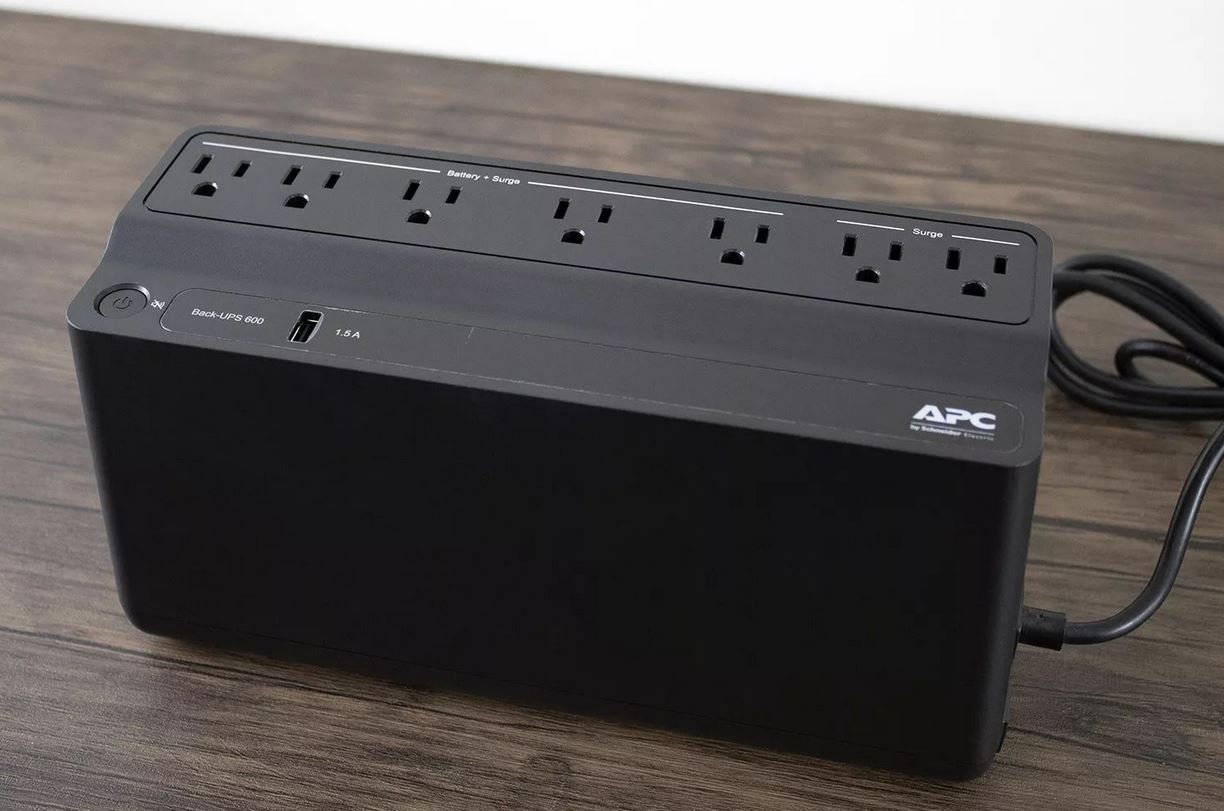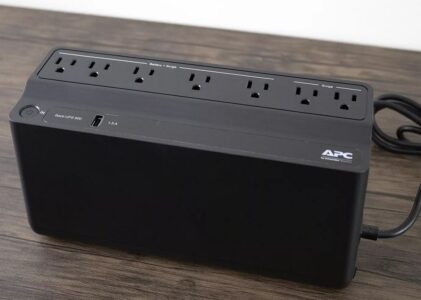An Uninterrupted Power Supply (UPS) is essential equipment for:
- Desktop Computers
- Network Router
- Modem
- Network-attached Storage
In the late 70’s, I’ve invested hours on a project using the family’s new Apple II+ computer. Meanwhile, and unbeknownst to me, my older brother is tinkering on a project that had him turn off the house electricity. I lost all the work I’d done, and I wasn’t pleased. Decades later, I have no idea what I was working on, but I do remember the lesson. Always make sure to save your work along the journey.
These days, some software is configured with auto save activated. But the lesson should not be lost. You may not want this feature to be active because you’re experimenting with artifact changes of which you readily want to revert. And without time to exit software normally, you may not have captured the very last changes.
Depending on how the power came down such as the power surging in the struggle to maintain power, it can be very hard on the equipment. Such voltage fluctuations have been known to cause a loss in data, data corruption, damaged motherboards, damaged hard drive(s), damage the CPU Power supply module, slow the performance, or create an inability for a batter to charge. The most dangerous power surge can occur when the power is restored.
Surge Protectors are designed to defend your equipment from the largest surges; however, they are inadequate in handling undervoltage and overvoltage situations. When the power goes out, they are unable to continue to provide equipment with power for the time it takes to finish computer tasks and shutdown cleanly.
This is where UPS devices shine. The better ones will auto fix over voltage and undervoltage conditions along with their basic function of maintaining power for a period of time. With software communication with the UPS device, the computer knows how much time it has to wrap up and automate a clean shutdown.
Maybe you don’t own a desktop computer, so you think this doesn’t apply. Other devices that have disk drives are also impacted such as DVR’s. Since the late 90’s, the Internet connected in home devices have grown to be ubiquitous. Just because the power is out doesn’t mean the Internet is down. You can, and you should, use a UPS to support your Modem and Router. These devices are then able to continue functioning for the duration of the UPS Batteries capacity. If the UPS is sized for a desktop computer, but only powering network devices, it may function for 10+ hours.
You’ll find this very useful in the case of short outages as there will be no hiccup in the communications your computer and smartphone engage in. If you have VoIP landline service, this will also ensure uninterrupted phone connectivity.
The alternative during a power outage is to use your smartphone as a hot spot. This can be a pain to login to all your IOT (Internet of Things) devices in your home and configure them to use your phone Hot Spot instead of your Wi-Fi. Of course, you’ll need to undo the changes when the power comes back online. No surge protector or UPS can protect a device during weather events causing power fluctuations better than unplugging the devices. For any prolonged event where electricity stability is an issue, assuming you’re home at the time, it is highly advisable to shut down cleanly and simply unplug. If the power goes completely out, it is better to unplug than to let the equipment experience the hit of the initial power surge when the grid goes back online


